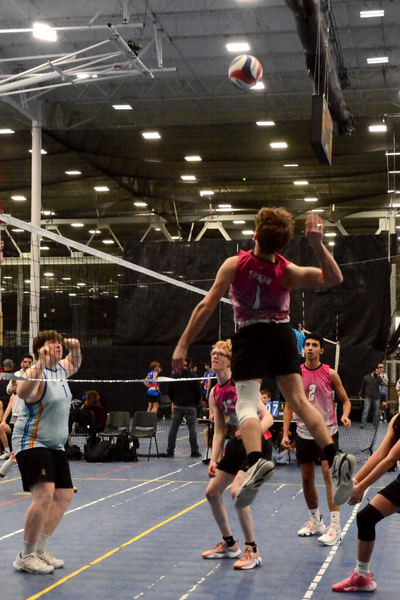The sport of volleyball is relatively free from danger compared to other activities within the realm of sports. It’s not a contact sport like football or soccer, which yield some of the highest injury rates each year. It’s probably safe to assume that when most people think about safety within the sport of volleyball, they think about personal injuries.
What is the first thing that comes to mind when it comes to volleyball and safety?
This is the question I asked players, parents, coaches, and officials at two recent volleyball tournaments. Undoubtedly, the primary response was injuries. Players and coaches alike worried about loose balls, either on the floor where players could trip and roll ankles, or in the air which could lead to concussions. There was also an overwhelming worry about net play and injury from either blocking the ball or getting fingers caught in the net or coming down from a jump and landing on someone’s foot and twisting an ankle. Knee injuries were also a big concern.

Ankle, knee, and head injuries are examples of the most common volleyball injuries. According to a 2021-22 High School Sports-Related Injury Surveillance Study, 59% of girls’ volleyball high school injuries that occurred during competition were a strain or sprain, and 22% were concussions. These percentages fall in line with the concerns expressed by the players I spoke with.
But, there are certainly other concerns that we should all be aware of beyond what happens in the moment of play. For instance, when it comes to organizing a tournament there are a slew of worries to consider as was recently pointed out to me by tournament director Val Podczasy. Her biggest concern when organizing a tournament has to do with people management. Do the courts have enough room for players to get to the ball and enough room for parents to sit and watch their children? Is there a trainer on site? Is there padding on poles or official stands?
Speaking of officials, have you ever thought about those fast-flying balls and those men and women standing on the up-ref stands? It is not inconceivable for a ball to fly toward an official causing them to lose balance on the stand. The officials that I spoke with did worry about their safety while on the stands, but at the same time they worry about the players on the court and pay attention to the surroundings and whether there are safety concerns that need to be addressed.
While personal safety (injuries) and physical safety (facilities) are at the front of people’s minds when attending a tournament, what about another important safety topic: sexual predators? Curiously, nobody brought up this issue when asked. All KRVA-affiliated employees (think coaches, club directors, officials, etc.) are required to undergo SafeSport training and pass background checks, but there is always the possibility that someone could slip through the cracks. It’s an additional concern that we should probably keep in the back of our minds.
Yes, volleyball is relatively safe, and athletes are going to sustain injuries from time to time. There are so many moving pieces involved in organizing and participating in a tournament, and it’s encouraging to know that there are many people looking out for the welfare of our kids, including players looking out for each other.
